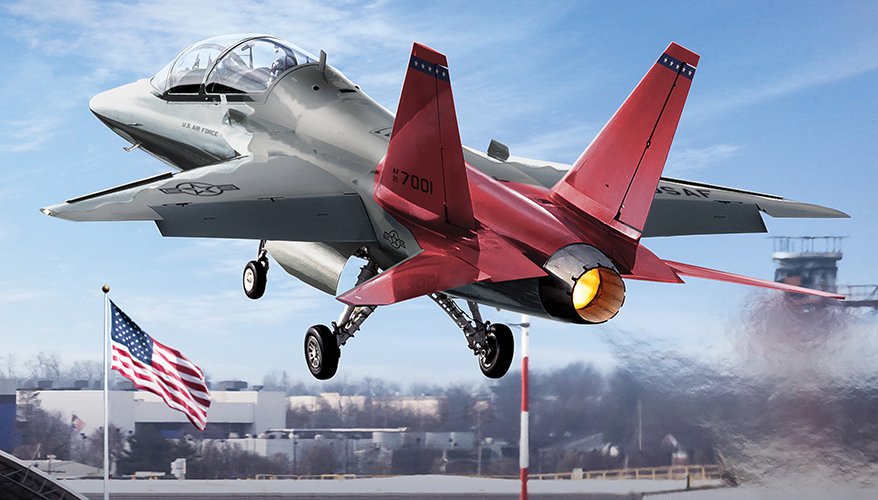
Dubai: Back in 2018, when Boeing bid aggressively to win a US Air Force competition to build what is now the T-7A Red Hawk, the company’s strategy raised concerns about the aircraft’s profitability — concerns that on the surface appear borne out now that the program has cost the aerospace giant approximately $1.3 billion in losses so far on its fixed-price contract.
But a top Boeing official says the strategy that secured the Air Force’s trainer program is nevertheless shaping up to pay dividends in the long run, as customers abroad express desire for a new trainer of their own, and the US military services move toward separate training programs for different mission requirements.
According to reports, the US Air Force is even interested in converting the jet into an armed fighter to replace older F-16s, possibly calling for even more potential production by Boeing for the service alone.
“Boeing was very aggressive about going after the AETC [Air Education and Training Command] contracts in the beginning, because they knew that this was going to happen. So that was a part of the strategy early on,” Donn Yates, Boeing’s executive director for Air Force fighters and trainers, told reporters during a briefing at the Air Show here.
As domestic and international demand mounts, Yates explained that the T-7A will likely need to hit full-rate production with the Air Force’s current program first before that demand could be met, calling the service “our number one customer.” Last week, the first Red Hawk for the service landed at Edwards Air Force Base, a crucial next step in the trainer’s development that is running over two years behind schedule.
In the past, Boeing and partner Saab, which makes the jet’s aft fuselage, have set a goal of selling over 2,700 of the trainers by leaning into the international market. Yates wouldn’t commit to that specific number citing “lots of variables,” though he did say, “I think there will be announcements on new customers soon.”
Yates also noted that at least for other US-focused sales, some changes would need to be made to the aircraft. The Air Force required that the Red Hawk be built without “any classified infrastructure,” Yates said, meaning that alterations are necessary before it could be pitched for other training programs floated by the services, such as the Air Force’s advanced tactical trainer or a Navy surrogate aircraft.
With a surrogate aircraft, Yates explained a cockpit could be reconfigured — the idea being that fighter pilots, for example, could train on controls of a full combat aircraft installed on the cheaper platform. According to Yates, Boeing is “looking at concepts to provide surrogacy for every single aircraft that is in existence right now all over the world.”
Boeing is scouting the globe for customers searching for training modernisation, Yates noted, underscoring the company’s presence at the air show. “Part of the reason we’re here in Dubai is to expose to customers in the region,” he said, adding that Boeing will “hopefully have some customers from the Middle East here soon.”
Yates said Boeing has started investing its own internal resources to explore modifications to the T-7A, and teased that more details about the company’s future plans for the Red Hawk would be released in either the first or second quarter of next year.
Despite optimism about its future, Boeing isn’t out of the woods yet for the T-7A’s development. The Government Accountability Office has voiced scepticism about the program’s re-baselined production decision now set for February 2025, though the Air Force has expressed confidence that timeline could be met.
“We hope flight test goes smooth, knocking on wood,” Yates said. “And we hope to be through with a milestone C decision in quarter one of 2025.”








